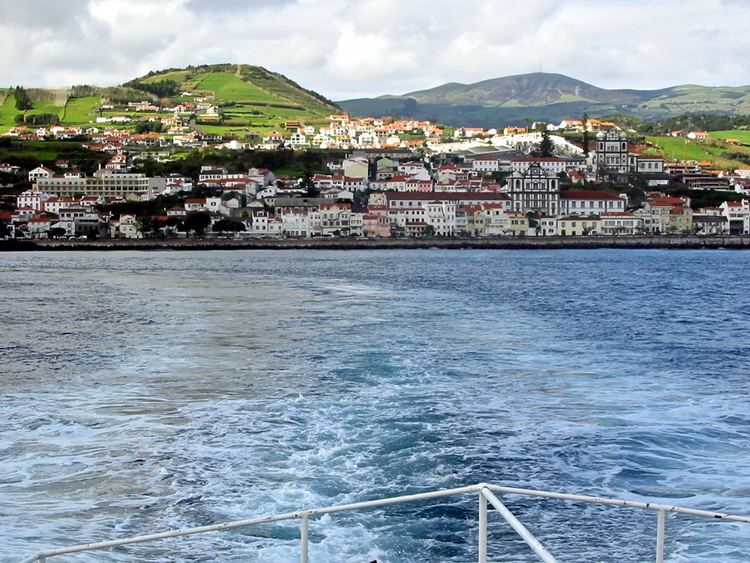- elevation 76 m (249 ft) - elevation 267 m (876 ft) - elevation 0 m (0 ft) | - location Dutras - location Atlantic Ocean Area 171 ha | |
 | ||
- location Largo Duque D'Ávila e Bolama, Nº16 Weather 13°C, Wind NW at 10 km/h, 89% Humidity | ||
Matriz is a civil parish in the municipality of Horta, in the Portuguese Azores, which is part of the urbanized core of the city of Horta. The population in 2011 was 2,562, in an area of 1.81 km². It is the smallest and most populous parish on the island.
Contents
History
It was the second Captain-major of Faial, Joss d'Utra, son of the Flemish pioneer Josse van Huerter, that originally settled and developed the area of Matriz. The religious parish, Matriz do Santissimo Salvador, was created from successive growth, and the area become integrated into the larger village of Horta, and municipal seat, in 1498 by the royal decree of King Manuel I of Portugal.
The primitive Church Matriz de São Salvador was completed and inaugurated on June 28, 1514; it compliments the Flemish church of the same name in Bruges and the Sé of Angra do Heroísmo. It was successively sacked in 1589, then 1597, by English privateers.
In 1643, Diogo das Chagas identified that the area of the Matriz had about 1,985 inhabitants in 449 homes. It was also a centre of the faith community during the period of exploration; the home to several churches and religious sanctuaries, that include: the Jesuit Church and Convent, the Church of Misericórdia (Mercy), the Convent of São João, the Convent of Nossa Senhora da Glória, the Convento de Santo António, the Império dos Nobres (in homage to the 1672 volcanic eruption) and the old Clock Tower (former tower of another destroyed church).
Geography
Matriz is buttressed between its urban neighbors Angústias (along its southern border), Conceição (along its northern), and the landlocked parish of Flamengos (towards the west)): it fronts Horta Bay, and the island of Pico towards the east. Generally, the parish is a gently sloping tract of land that slopes towards the interior (Flamengos), that is highly urbanized and which constitutes the core the city of Horta.
Most commercial, administrative and residential uses are concentrated in this parish, including the Regional Assembly, many of the historical churches (including Igreja Matriz do SS.º Salvador da Horta), convents and social services, antique farmers market, post office, archive and other public buildings. Landmarks includes the Horta Museum, Sociedade Recreativa Amor da Pátria, Império dos Nobres (Empire of Nobles), Horta's clock tower, the former Walter Bensaúde Hospital (future expansion of the Department of Oceanography and Ichthyology of the University of the Azores, a panoramic view at Monte Carneiro and the Horta Archive and the Public Library (the old Bensaúde House, Port.: Casa Bensaúde).
